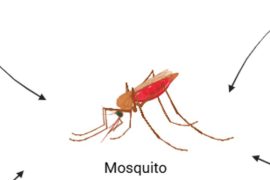Bhawna Verma1, Madhumita Dey2, Rachna Sehgal3
- M.Sc. Nursing, Rajkumari Amrit Kaur College of Nursing, New Delhi, India
- Assistant Professor, Department of Medical Surgical Nursing, Rajkumari Amrit Kaur College of Nursing, New Delhi, India
- Professor, Department of Pediatrics, VMMC and Safdarjung Hospital, New Delhi, India
ABSTRACT
Introduction: Developmental disabilities prevalence appears to be significant worldwide. In India, around 10% of children have developmental disabilities, according to RBSK. Sensory sensitivity has also been associated with behavioural feeding problems among children with developmental disabilities. Hence, the current study aimed to assess sensory sensitivity and behavioural feeding problems among children with developmental disabilities attending Child Developmental Centre of Safdarjung hospital, New Delhi.
Objectives: To assess & seek a relationship between sensory sensitivity & behavioral feeding problems among children with developmental disabilities and to seek an association between sensory sensitivity & behavioral feeding problems among developmentally disabled children with selected factors.
Research: Tmethodologyhe study used a descriptive survey research design including 150 children aged 6 – 11 years diagnosed with Autism Spectrum Disorder, Cerebral Palsy, Specific Language Disability, ADHD, Intellectual Disability, and Down Syndrome attending Child Developmental Centre of Safdarjung hospital, selected via purposive sampling technique. The data collected though demographic structured interview schedule with anthropometric measurements of child and two standardized tools including Parent completed Glasgow Sensory Questionnaire for assessing sensory sensitivity across sensory subscales i.e. visual, auditory, gustatory, olfactory, tactile, vestibular & proprioception and Behavioural Paediatric Feeding Assessment for assessing child’s behavioural feeding problems.
Result: Children with ASD, ADHD and Intellectual Disability had higher mean sensory sensitivity in terms of total sensory sensitivity, sensory hypersensitivity & hyposensitivity. Mean of visual, auditory, tactile & proprioception sensory sensitivity in terms of total sensitivity, hypersensitivity & hyposensitivity were observed higher among children with Autism Spectrum Disorder, Attention Deficit Hyperactivity Disorder and Intellectual Disability. Similarly, children with ASD, ADHD and Intellectual Disability had higher behavioural feeding problems. The study found a significant (p value =0.00) moderate positive relationship between total sensory sensitivity among children with developmental disabilities and behavioral pediatric feeding problem. It was revealed that p values for maternal occupation (p= .027), nutritional status (p= .000), diagnosis of child (p= .002) were found to be statistically significant at 0.05 level of significance to seek the association between behavioural pediatric feeding problem among children with developmental disabilities and the selected variables.
Thus, behavioural pediatric feeding problem was dependent on maternal occupation, nutritional status, diagnosis of child. The findings also showed that p-values for type of family (p= .033), socio-economic status (p=.010), maternal occupation (p= .022), nutritional status (p= .004), diagnosis of child (p= .000) were found to be statistically significant at 0.05 level of significance to seek the association between sensory sensitivity and selected variables. Thus, sensory sensitivity was dependent on type of family, socio-economic status, maternal occupation, nutritional status, diagnosis of child.
Conclusion: Aberrant sensory sensitivity may play an important role in the behavioural feeding problems among children with developmental disabilities. It is concluded that higher total sensory sensitivity is more likely to have behavioral pediatric feeding problems among children with developmental disabilities and there is also an association between sensory sensitivity, behavioural feeding problems with type of family, socio-economic status, maternal occupation, nutritional status & diagnosis of child.
Disclaimer:
The information contained in this article is for educational and informational purposes only and is not intended as a health advice. We would ask you to consult a qualified professional or medical expert to gain additional knowledge before you choose to consume any product or perform any exercise.







